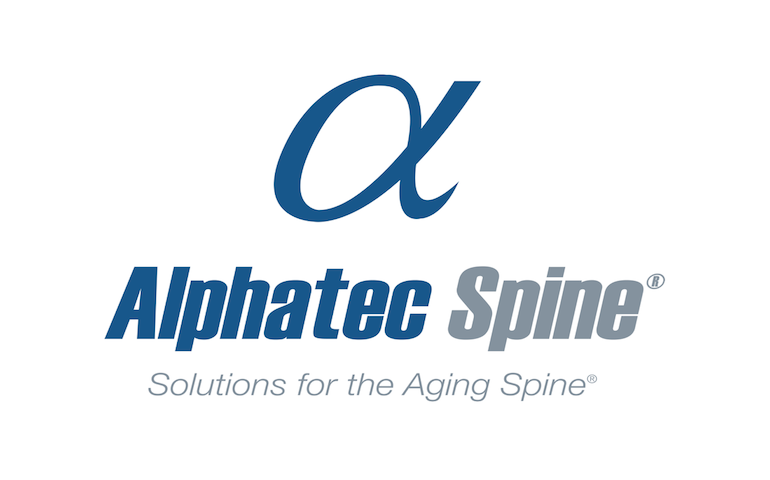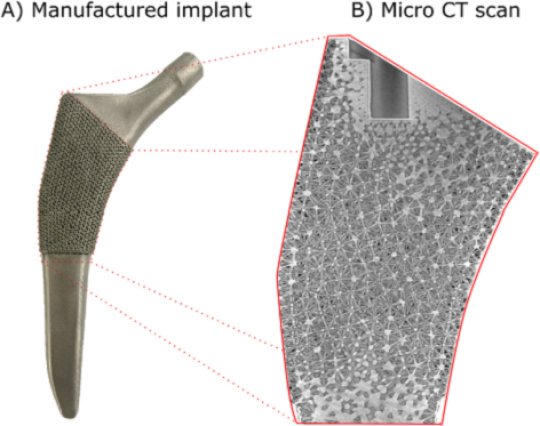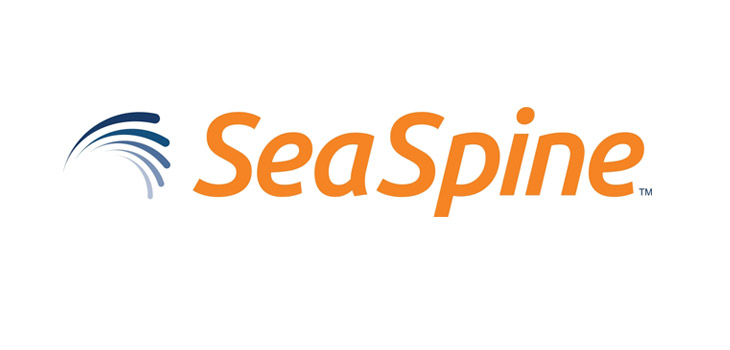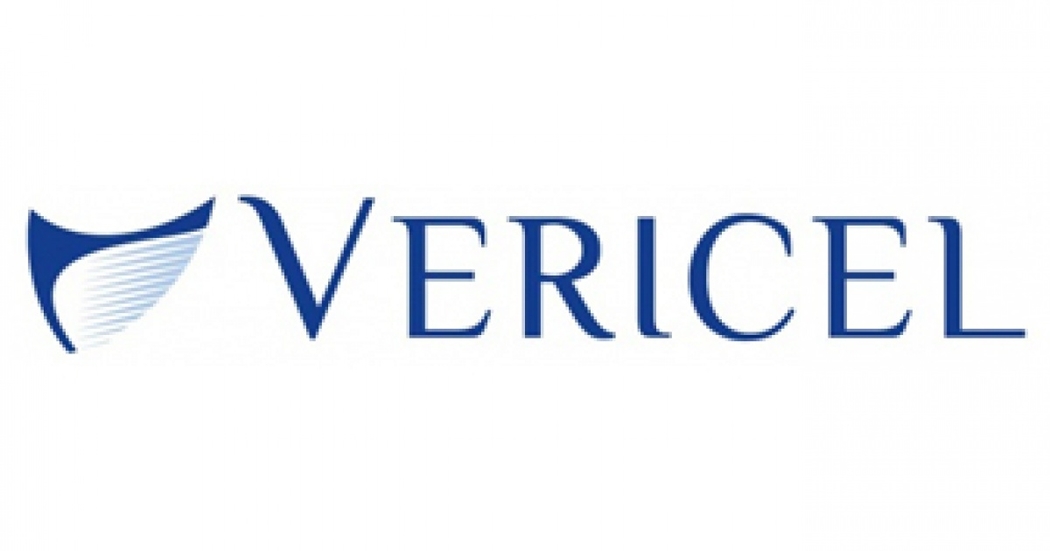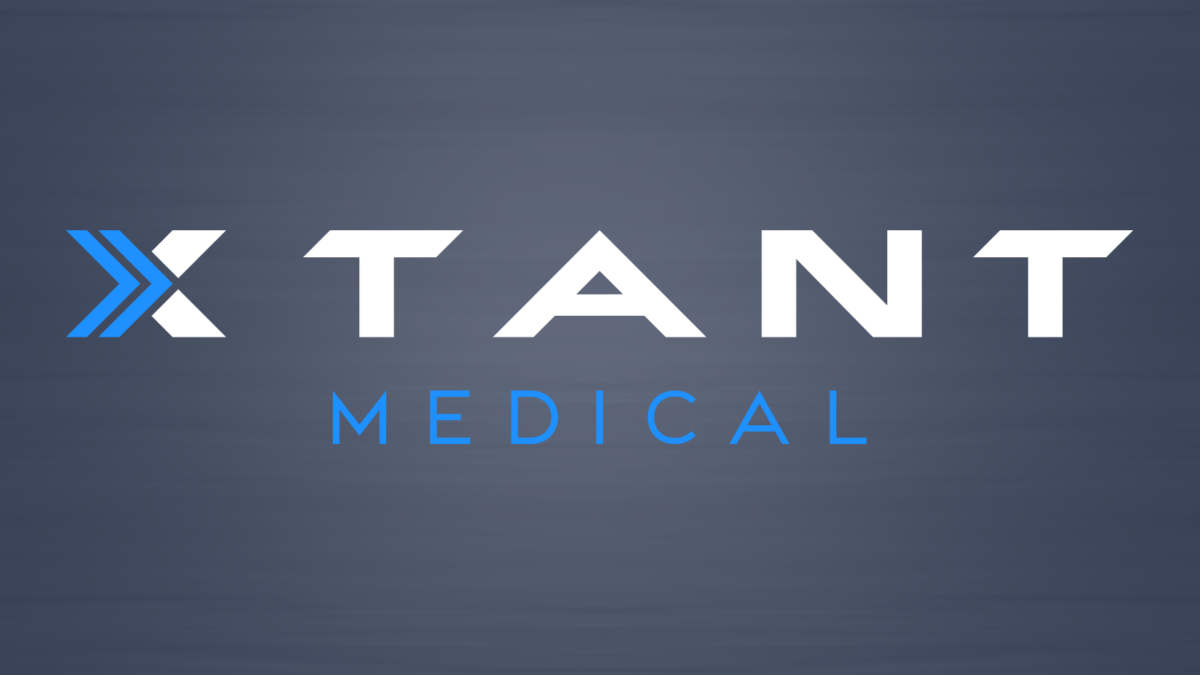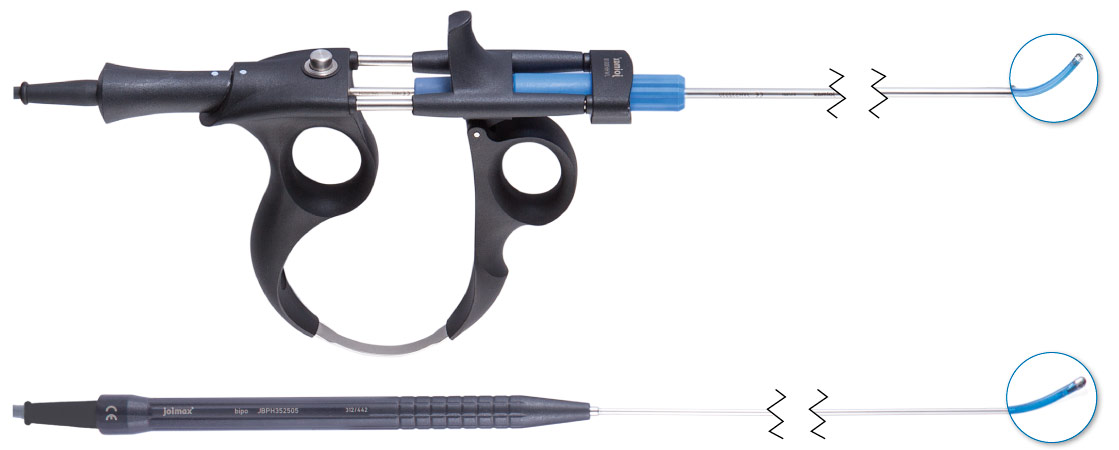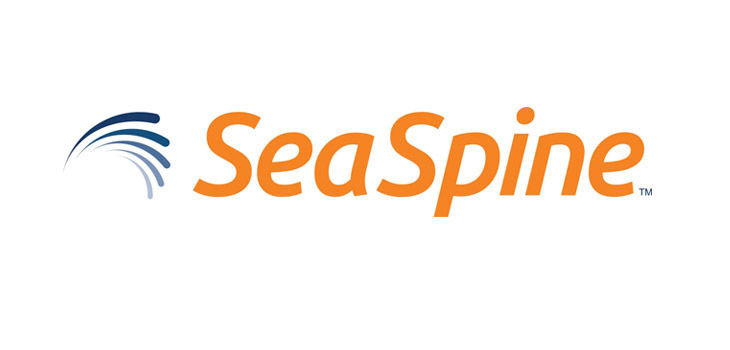CARLSBAD, Calif., Nov. 09, 2016 (GLOBE NEWSWIRE) — Alphatec Holdings, Inc. (Nasdaq:ATEC), the parent company of Alphatec Spine, Inc., a provider of spinal fusion technologies, announced today financial results for the third quarter ended September 30, 2016. Today the Company also announced that Donald Williams, the Chairman of the Company’s Audit Committee, has been named Lead Independent Director, effective immediately.
- Third quarter total net revenues of $26.7 million; revenue from the Company’s U.S. commercial business of $25.2 million.
- Cash totaled $25.6 million at the end of the third quarter.
Highlights of the Third quarter 2016 and Recent Activities
Operational Activities
- Closed sale of international business to Globus Medical on September 1, 2016 for $80 million in cash and $30 million, 5-year term loan.
- New capital structure established — reduced overall Company debt to $40.9 million at September 30, 2016.
- CEO search actively underway with a nationally recognized executive search firm.
Products and Portfolio
- Actively developing and commercializing products in the minimally invasive (MIS) and complex spine markets — two of the fastest growth segments for spine.
- Arsenal™ Deformity — limited launch underway, including the addition of the Adolescent Idiopathic Scoliosis (AIS) module in Q4 2016.
- Battalion™ Lateral Spacer System and Squadron™ Lateral Retractor — received FDA 510(k) market clearance; preparing for limited market release in Q1 2017.
- XYcor® Expandable Spinal Spacer System — received FDA 510(k) market clearance; introduced to surgeons at NASS; limited market release anticipated in Q4 2016.
Supply Chain Operations
- Completed transition of international business to Globus Medical; successfully operating supply chain model to support ongoing supply agreement for international products.
- Completed corporate restructuring to align with the Company’s targeted focus on the U.S. markets and reduced workforce by 20%.
- Suppliers are engaged and actively collaborating with the Company to ensure the continuous flow of new and existing products through the supply chain.
“We are in the process of building an exciting new company, a new Alphatec, with a simplified operating model, new senior leadership and a positive new culture for our employees and our customers — all of which are supported by a broad portfolio of innovative products,” said Leslie Cross, Chairman and Chief Executive Officer of Alphatec Spine. “Strategically, our focus for the new Alphatec is simple. We must excel at managing our supply chain and we need to reinvigorate our sales performance and grow our U.S. business. Today, we are actively working on both initiatives with a collective passion and sense of urgency. This journey will take time and we anticipate both challenges and opportunities along the way. I am confident that the leadership team has the skills and experience to drive the change needed to improve our performance and deliver enduring, profitable growth. We look forward to sharing more details about our plans early in the new year.”
Mr. Cross added, “In addition, I am pleased to announce that Don Williams has accepted to serve as the Company’s Lead Independent Director. Don has been an Alphatec board member since May 2015 and the Chairman of the Audit Committee since October 2015. His experience in the public accounting industry and his contributions as a director on our board have been invaluable and we appreciate his continuing commitment to Alphatec.”
Discontinued and Continuing Operations
On September 1, 2016, the Company completed the sale of the Company’s international operations and distribution channel to Globus Medical. Consequently, the Company’s financial results from the international business, excluding revenue and cost of sales with wholly owned subsidiaries, are reflected within discontinued operations for all periods presented. Going forward, the financial results from continuing operations will consist of net product revenue for the U.S. commercial business and the revenue associated with the supply agreement with Globus Medical. For more information on the details related to discontinued operations, please see the Company’s Form 10-Q filed with the Securities and Exchange Commission on November 9, 2016.
Quarter Ended September 30, 2016
U.S. commercial revenues for the third quarter of 2016 were $25.2 million, down 8%, compared to $27.4 million reported for the third quarter of 2015. Within the Company’s direct hospital business, implant unit volume has increased over the prior year, however, this growth has been offset by mid-single digit price decline consistent with the pricing trends the Company has experienced for the past several years. Revenue from the Company’s stocking business is down approximately 50% from the prior year. The third quarter of 2016 was a difficult quarter for the Company given the distraction related to the sale of the international business, which contributed to a sequential decline in hospital implant unit volumes from the second quarter of 2016. Today, with the successful sale and transition of the international business complete and an improved balance sheet, the Company is actively engaging with surgeon and distributor customers and building a plan to regain sales momentum and improve U.S. sales.
U.S. gross profit and gross margin for the third quarter of 2016 were $15.2 million and 60.4%, respectively, compared to $19.5 million and 71.3%, respectively, for the third quarter of 2015.
Gross margin declined 10.9 percentage points from the third quarter of 2016 primarily as a result of increased inventory costs due to lower than anticipated purchase volume and obsolete inventory reserve adjustments related to optimizing the Company’s product portfolio through active product lifecycle management.
Total operating expenses for the third quarter of 2016, excluding charges for restructuring and intangible asset impairment, were $17.1 million, reflecting a decrease of $4.6 million compared to the third quarter of 2015. The Company has been actively monitoring its expenses and reducing costs across the general and administrative (G&A), research and development (R&D) and marketing and selling areas of the business, which contributed to this 21% overall reduction in total operating expenses. The Company is making steady progress on its goal of reducing its operating expenses by $20 million and continues to look for additional opportunities to improve its cost structure to better align with its focus on the U.S. market going forward.
GAAP net loss for the third quarter of 2016 was $13.7 million or ($1.18) per share (basic and diluted), compared to a net loss of $160.3 million, or ($18.96) per share basic and diluted for the third quarter of 2015. GAAP net loss for the third quarter of 2015 was unfavorably impacted by $164.3 million of non-cash impairment charges, as well as favorable $6.3 million of warrant fair-value adjustments attributable to the Company’s underlying stock price.
Adjusted EBITDA in the third quarter of 2016 was $709 thousand, or 2.7% of revenues, compared to $3.5 million, or 11.0% of revenues reported in the third quarter of 2015. Third quarter 2016 adjusted EBITDA represents net income excluding effects of interest, taxes, depreciation, amortization, stock-based compensation and restructuring expenses.
Cash and cash equivalents were $25.6 million at September 30, 2016, compared to $9.5 million reported at June 30, 2016. The increase is primarily the result of the proceeds from the sale of the international business and the associated borrowing under the debt facility with Globus Medical.
Total Current and Long-term Debt, which includes both MidCap Financial and Globus Medical, was $40.9 million at September 30, 2016. This represents a decrease of $34.7 million from June 30, 2016 as a result of the Company applying a significant portion of the net proceeds from the sale of the international business to reduce the Company’s total debt and the addition of the $25 million initial draw down from the credit facility with Globus that occurred upon closing of the Globus transaction.
Nine Months Ended September 30, 2016
U.S. net revenues for the nine months ended September 30, 2016 were $82.4 million, down 3.1%, compared to $85.1 million reported for the nine months ended September 30, 2015. Sales in the Company’s direct hospital business increased over the same period in the prior year, however, this growth was partially offset by mid-single digit price declines consistent with pricing trends the Company has experienced for the past several years. Revenue from the Company’s stocking business is down approximately 50% from the same period in the prior year.
U.S. gross profit and gross margin for the nine months ended September 30, 2016 were $56.4 million and 68.4%, respectively, compared to $58.1 million and 68.3%, respectively, for the nine months ended September 30, 2015.
Gross margin increased slightly from the prior period primarily as a result of the absence of one-time charges that were present during the nine months in 2015 that are not present over the same period in 2016.
Total operating expenses for the nine months ended September 30, 2016, excluding charges for restructuring and intangible asset impairment, were $66.3 million, reflecting a decrease of $3.8 million compared to the nine months ended September 30, 2015. The 5.5% improvement from prior period is primarily driven by expense reductions across R&D, marketing and G&A.
GAAP net loss for the nine months ended September 30, 2016 was $25.6 million or ($1.91) per share (basic and diluted), compared to a net loss of $168.8 million, or ($19.92) per share basic and diluted for the nine months ended September 30, 2015. GAAP net loss for the nine months ended September 30, 2015 was unfavorably impacted by $164.3 million of non-cash impairment charges, as well as favorable $6.3 million of warrant fair-value adjustments attributable to the Company’s underlying stock price.
Adjusted EBITDA in the nine months ended September 30, 2016 was $3.3 million, or 3.5% of revenues, compared to $7.1 million, or 7.1% of revenues reported in the nine months ended September 30, 2015. Nine months ended September 30, 2016 adjusted EBITDA represents net income excluding effects of interest, taxes, depreciation, amortization, stock-based compensation and restructuring expenses.
Non-GAAP Information
Alphatec Spine reports certain non-GAAP financial measures such as non-GAAP earnings and earnings per share, adjusted for effects of amortization and other non-recurring or expense items, such as impairments, loss on extinguishment of debt, and restructuring expenses. Adjusted EBITDA included in this press release is a non-GAAP financial measure that represents net income (loss) excluding the effects of interest, taxes, depreciation, amortization, stock-based compensation expenses, in process research and development (IPR&D) expenses and other non-recurring income or expense items, such as impairments, restructuring expenses, severance expenses, litigation expenses, damages associated with ongoing litigation and transaction-related expenses. The Company believes that non-GAAP adjusted EBITDA provides investors with an additional tool for evaluating the Company’s core performance, which management uses in its own evaluation of continuing operating performance, and a base-line for assessing the future earnings potential of the Company. For completeness, management uses non-GAAP adjusted EBITDA in conjunction with GAAP earnings and earnings per common share measures. These non-GAPP financial measures should be considered in addition to, and not as a substitute for, or superior to, financial measures calculated in accordance with GAAP. Included below are reconciliations of the non-GAAP financial measures to the comparable GAAP financial measure.
About Alphatec Spine
Alphatec Spine, Inc., a wholly owned subsidiary of Alphatec Holdings, Inc., is a medical device company that designs, develops and markets spinal fusion technology products and solutions for the treatment of spinal disorders associated with disease and degeneration, congenital deformities and trauma. The Company’s mission is to improve lives by delivering advancements in spinal fusion technologies. The Company markets products in the U.S. via a direct sales force and independent distributors.
Additional information can be found at www.alphatecspine.com.
Forward Looking Statements
This press release may contain “forward-looking statements” within the meaning of the Private Securities Litigation Reform Act of 1995 that involve risks and uncertainty. Such statements are based on management’s current expectations and are subject to a number of risks and uncertainties that could cause actual results to differ materially from those described in the forward-looking statements. Alphatec Spine cautions investors that there can be no assurance that actual results or business conditions will not differ materially from those projected or suggested in such forward-looking statements as a result of various factors. Forward looking statements include the references to the success of the Company’s initiatives to drive sales growth, increase margins and increase operating efficiencies. The important factors that could cause actual operating results to differ significantly from those expressed or implied by such forward-looking statements include, but are not limited to: the uncertainty of success in developing new products or products currently in Alphatec Spine’s pipeline, including the products discussed in this press release; the uncertainties in the Company’s ability to execute upon its strategic operating plan; the uncertainties regarding the ability to successfully license or acquire new products, and the commercial success of such products; failure to achieve acceptance of Alphatec Spine’s products by the surgeon community, including Battalion, Arsenal Deformity and XYcor; the Company’s ability to meet the product supply obligations set forth in the supply agreement with Globus Medical; failure to obtain FDA clearance or approval or international regulatory approvals for new products, including the products discussed in this press release, or unexpected or prolonged delays in the process; continuation of favorable third party payor reimbursement for procedures performed using the Company’s products; unanticipated expenses or liabilities or other adverse events affecting cash flow or the Company’s ability to successfully control its costs or achieve profitability; uncertainty of additional funding; the Company’s ability to compete with other competing products and with emerging new technologies; product liability exposure; an unsuccessful outcome in any litigation in which the Company is a defendant; patent infringement claims; claims related to the Company’s intellectual property and the Company’s ability to meet its financial obligations under its credit agreements and the Orthotec settlement agreement. The words “believe,” “will,” “should,” “expect,” “intend,” “estimate” and “anticipate,” variations of such words and similar expressions identify forward-looking statements, but their absence does not mean that a statement is not a forward-looking statement. Please refer to the risks detailed from time to time in Alphatec Spine’s SEC reports, including its Annual Report Form 10-K for the year ended December 31, 2015, filed on March 15, 2016 with the Securities and Exchange Commission, and its Amended Annual Report Form 10-K/A filed on April 29, 2016, as well as other filings on Form 10-Q and periodic filings on Form 8-K. Alphatec Spine disclaims any intention or obligation to update or revise any forward-looking statements, whether as a result of new information, future events, or otherwise, unless required by law.
| ALPHATEC HOLDINGS, INC. | ||||||||||||||||||
| CONDENSED CONSOLIDATED STATEMENTS OF OPERATIONS | ||||||||||||||||||
| (in thousands, except per share amounts – unaudited) | ||||||||||||||||||
| Three Months Ended | Nine Months Ended | |||||||||||||||||
| September 30, | September 30, | |||||||||||||||||
| 2016 | 2015 | 2016 | 2015 | |||||||||||||||
| Revenues | $ | 26,711 | $ | 31,687 | $ | 93,158 | $ | 99,597 | ||||||||||
| Cost of revenues | 10,849 | 10,029 | 31,651 | 35,174 | ||||||||||||||
| Gross profit | 15,862 | 21,658 | 61,507 | 64,423 | ||||||||||||||
| 59.4 | % | 68.3 | % | 66.0 | % | 64.7 | % | |||||||||||
| Operating expenses: | ||||||||||||||||||
| Research and development | 1,087 | 1,850 | 6,799 | 9,538 | ||||||||||||||
| In-process research and development | – | 274 | – | 274 | ||||||||||||||
| Sales and marketing | 11,764 | 12,774 | 39,498 | 37,864 | ||||||||||||||
| General and administrative | 4,136 | 6,541 | 19,760 | 21,579 | ||||||||||||||
| Amortization of acquired intangible assets | 83 | 280 | 249 | 896 | ||||||||||||||
| Impairment of goodwill and intangibles | 1,736 | 164,263 | 1,736 | 164,263 | ||||||||||||||
| Restructuring expenses | 1,605 | 351 | 1,778 | 351 | ||||||||||||||
| Total operating expenses | 20,411 | 186,333 | 69,820 | 234,765 | ||||||||||||||
| Operating income (loss) | (4,549 | ) | (164,675 | ) | (8,313 | ) | (170,342 | ) | ||||||||||
| Interest and other income (expense), net | (10,511 | ) | 5,194 | (12,870 | ) | 4,224 | ||||||||||||
| Pretax net loss | (15,060 | ) | (159,481 | ) | (21,183 | ) | (166,118 | ) | ||||||||||
| Income tax (benefit) provision | (4,997 | ) | (2,483 | ) | (4,962 | ) | (1,328 | ) | ||||||||||
| Loss from continuing operations | (10,063 | ) | (156,998 | ) | (16,220 | ) | (164,790 | ) | ||||||||||
| Loss from discontinued operations | (3,658 | ) | (3,267 | ) | (9,351 | ) | (3,983 | ) | ||||||||||
| Net loss | $ | (13,721 | ) | $ | (160,265 | ) | $ | (25,571 | ) | $ | (168,773 | ) | ||||||
| Net loss per share continuing operations | $ | (1.18 | ) | $ | (18.96 | ) | $ | (1.91 | ) | $ | (19.92 | ) | ||||||
| Net loss per share discontinued operations | (0.43 | ) | (0.39 | ) | (1.10 | ) | (0.48 | ) | ||||||||||
| $ | (1.60 | ) | $ | (19.35 | ) | $ | (3.01 | ) | $ | (20.40 | ) | |||||||
| Weighted-average shares – basic and diluted | 8,560 | 8,281 | 8,505 | 8,272 | ||||||||||||||
| ALPHATEC HOLDINGS, INC. | |||||||||
| CONDENSED CONSOLIDATED BALANCE SHEETS | |||||||||
| (in thousands – unaudited) | |||||||||
| September 30, | December 31, | ||||||||
| 2016 | 2015 | ||||||||
| ASSETS | |||||||||
| Current assets: | |||||||||
| Cash and cash equivalents | $ | 25,598 | $ | 6,295 | |||||
| Restricted Cash | – | 2,350 | |||||||
| Accounts receivable, net | 16,546 | 26,870 | |||||||
| Inventories, net | 27,661 | 32,424 | |||||||
| Prepaid expenses and other current assets | 2,941 | 3,138 | |||||||
| Current assets of discontinued operations | 2,828 | 30,418 | |||||||
| Total current assets | 75,574 | 101,495 | |||||||
| Property and equipment, net | 13,712 | 16,067 | |||||||
| Intangibles, net | 6,152 | 8,806 | |||||||
| Other assets | 516 | 502 | |||||||
| Noncurrent assets of discontinued operations | 71 | 19,471 | |||||||
| Total assets | $ | 96,025 | $ | 146,341 | |||||
| LIABILITIES AND STOCKHOLDERS’ (DEFICIT) EQUITY | |||||||||
| Current liabilities: | |||||||||
| Accounts payable | $ | 6,821 | $ | 13,542 | |||||
| Accrued expenses | 30,705 | 21,175 | |||||||
| Common stock warrant liabilities | – | 687 | |||||||
| Current portion of long-term debt | 2,647 | 79,742 | |||||||
| Current liabilities of discontinued operations | 2,207 | 9,891 | |||||||
| Total current liabilities | 42,380 | 125,037 | |||||||
| Total long term liabilities | 68,166 | 32,761 | |||||||
| Long term liabilities of discontinued operations | 87 | 1,516 | |||||||
| Redeemable preferred stock | 23,603 | 23,603 | |||||||
| Stockholders’ (deficit) equity | (38,211 | ) | (36,576 | ) | |||||
| Total liabilities and stockholders’ (deficit) equity | $ | 96,025 | $ | 146,341 | |||||
| ALPHATEC HOLDINGS, INC. | ||||||||||||||||||
| RECONCILIATION OF NON-GAAP FINANCIAL MEASURES | ||||||||||||||||||
| (in thousands, except per share amounts – unaudited) | ||||||||||||||||||
| Three Months Ended | Nine Months Ended | |||||||||||||||||
| September 30, | September 30, | |||||||||||||||||
| 2016 | 2015 | 2016 | 2015 | |||||||||||||||
| Operating income (loss), as reported | $ | (4,549 | ) | $ | (164,675 | ) | $ | (8,313 | ) | $ | (170,342 | ) | ||||||
| Add back: | ||||||||||||||||||
| Depreciation | 1,623 | 2,873 | 5,652 | 7,492 | ||||||||||||||
| Amortization of intangible assets | 223 | 188 | 666 | 1,745 | ||||||||||||||
| Amortization of acquired intangible assets | 83 | 280 | 249 | 896 | ||||||||||||||
| Total EBITDA | (2,620 | ) | (161,334 | ) | (1,746 | ) | (160,209 | ) | ||||||||||
| Add back significant items: | ||||||||||||||||||
| Stock-based compensation | (12 | ) | (78 | ) | 1,510 | 2,440 | ||||||||||||
| In-process research and development | – | 274 | – | 274 | ||||||||||||||
| Goodwill and intangible impairment | 1,736 | 164,263 | 1,736 | 164,263 | ||||||||||||||
| Restructuring and other charges | 1,605 | 351 | 1,778 | 351 | ||||||||||||||
| EBITDA, as adjusted for significant items | $ | 709 | $ | 3,476 | $ | 3,278 | $ | 7,119 | ||||||||||
| ALPHATEC HOLDINGS, INC. | ||||||||||||||
| RECONCILIATION OF REVENUES AND GROSS PROFIT | ||||||||||||||
| (in thousands, except percentages – unaudited) | ||||||||||||||
| Three Months Ended | ||||||||||||||
| September 30, | ||||||||||||||
| 2016 | 2015 | % Change | ||||||||||||
| Revenues by source | ||||||||||||||
| U.S. commercial revenue | $ | 25,189 | $ | 27,385 | -8.0 | % | ||||||||
| Other | 1,522 | 4,302 | -64.6 | % | ||||||||||
| Total revenues | $ | 26,711 | $ | 31,687 | -15.7 | % | ||||||||
| Gross profit by source | ||||||||||||||
| U.S. | $ | 15,206 | $ | 19,512 | ||||||||||
| Other | 656 | 2,146 | ||||||||||||
| Total gross profit | $ | 15,862 | $ | 21,658 | ||||||||||
| Gross profit margin by source | ||||||||||||||
| U.S. | 60.4 | % | 71.3 | % | ||||||||||
| Other | 43.1 | % | 49.9 | % | ||||||||||
| Total gross profit margin | 59.4 | % | 68.3 | % | ||||||||||
| Nine Months Ended | ||||||||||||||
| September 30, | % Change | |||||||||||||
| 2016 | 2015 | As Reported | ||||||||||||
| Revenues by source | ||||||||||||||
| U.S. base business | $ | 82,445 | $ | 85,099 | -3.1 | % | ||||||||
| Other | 10,713 | 14,498 | -26.1 | % | ||||||||||
| Total revenues | $ | 93,158 | $ | 99,597 | -6.5 | % | ||||||||
| Gross profit by source | ||||||||||||||
| U.S. | $ | 56,430 | $ | 58,092 | ||||||||||
| Other | 5,077 | 6,331 | ||||||||||||
| Total gross profit | $ | 61,507 | $ | 64,423 | ||||||||||
| Gross profit margin by source | ||||||||||||||
| U.S. | 68.4 | % | 68.3 | % | ||||||||||
| Other | 47.4 | % | 43.7 | % | ||||||||||
| Total gross profit margin | 66.0 | % | 64.7 | % | ||||||||||
CONTACT: Investor/Media Contact:
Christine Zedelmayer
Investor Relations
Alphatec Spine, Inc.
(760) 494-6610
czedelmayer@alphatecspine.com
